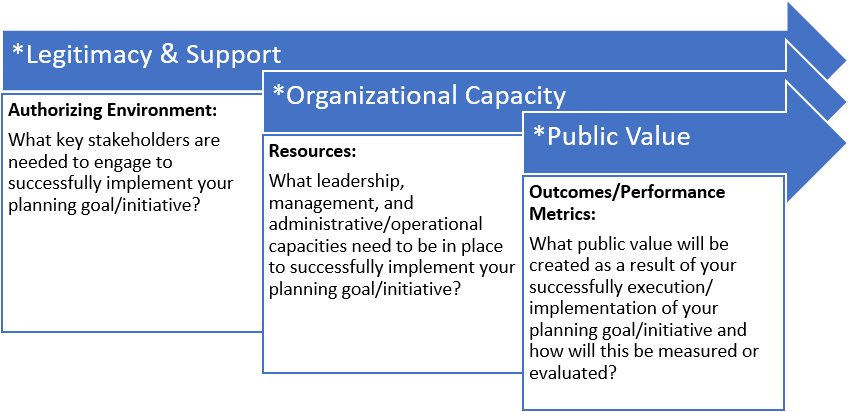Linda Dale Bloomberg holds the positions of associate director of faculty support and development, and full professor of education in the School of Education, Northcentral University, San Diego. Dr. Bloomberg received her doctorate in 2006 from Teachers College, Columbia University, where she completed the AEGIS Program in Adult and Organizational Learning. Her new book is titled Designing and Delivering Effective Online Instruction: How to Engage Adult Learners.
Part 1: Defining Student Success
Student success is increasingly tied to equity-minded policies and practices that ameliorate postsecondary achievement gaps. Now, more than ever before, it is imperative that we implement teaching strategies that promote equity, access, inclusivity, and a sense of belonging for all learners, including those of diverse cultural backgrounds and minority or under-represented groups. This must be central to our quest to establish inclusive and equitable learning experiences for our diverse learner populations especially as learning contexts continue to rapidly diversify in both online and hybrid formats. This blog is Part 1 of two-part series on ensuring equitable student success in higher education. The following blog is titled Leveraging Organizational Capacity to Meet Transformational Goals, and will be published shortly, so stay tuned!
In 2021 I published Designing and Delivering Effective Online Instruction: How to Engage Adult Learners, with the focus heavily on ensuring equity and inclusion. I also recently completed a course offered by The Harvard Graduate School of Education, Harvard Institutes for Higher Education,Ensuring Equitable Student Success in Higher Education which was designed to provide higher education leaders with the tools and strategies needed to generate equitable outcomes for all students. The major disruptions of the past few years continue to reshape the education landscape and have illuminated racial and socioeconomic inequities at higher education institutions — upending student lives, deepening the digital divide, and diminishing persistence rates. Ensuring equitable student success is a central focus of education at all levels, particularly in terms of uncovering ways to support minoritized students and students from underserved populations. This endeavor indeed becomes an imperative if we are to indeed address the needs of today’s ever evolving and increasingly diversified student populations.
Transformation is About Ensuring Equitable Student Success.
Transformation, at its most basic level, is about eliminating race, ethnicity, and income as predictors of completion and success. Transformation requires reflection and focus, and is best supported by starting with a universally understood student-centered mission that determines the creation of a student experience with equitable outcomes and educational value. In that context, the work also requires institutions to design inclusive practices and build learning environments that authentically facilitate student success.
Establishing a Definition of Student Success
Many institutions may have a strategic focus about equitable student success; however, they still struggle to define it. The difficulty in defining, let alone, supporting student success makes it likely that the promises which may have started with great intentions go unfilled. How success is defined impacts policies and practices, and ultimately affects student outcomes. Definitions of success will impact how researchers choose to measure the construct, which in turn will impact how data are interpreted and thus what recommendations are proposed. These recommendations will hopefully have real-world impacts on student outcomes in higher education in the form of changes in policy or practices, including curriculum development, pedagogy, assessment, and departmental requirements.
The phrase “student success” broadly refers to students reaping the promised benefits of their learning experience. As pointed out by Kinzie and Kuh (2017) the phase can also encompass a combination of institutional and student actions to realize the desired outcomes, including achievement levels, persistence rates, metrics of degree completion, acquisition of content knowledge, skill proficiency and development, analytical reasoning, and post-college employment and earnings. Weatherton and Schussler (2021) point to historically hegemonic conceptualizations of “student success”, and call on researchers to carefully consider their definitions of success and associated metrics with a clear focus on diversity and inclusion, to adopt a more holistic view, and to more fully consider how their conceptions of success impact their research. Moreover, as these authors emphasize, it is critical to make space for and solicit student voice, and ensure that student advocacy is incorporated in all planning, implementation, and evaluation efforts; thereby empowering student agency and engagement in learning.
Establishing a Conceptual Structure for Student Success
There is a constantly growing body of theory, empirical research, and practical strategies related to student success, with the emphasis on supporting diverse students and increasing “equity-minded” practice. Yet institutions do not always effectively implement a conceptual structure to build and test theories for improvement and to clarify and articulate what is needed to achieve their student success goals (Bloomberg, 2021). As Kinzie and Kuh (2017) aptly put it, “To realize improved student success outcomes, a re-envisioned student success framework is needed, one that is grounded in evidence-based policies and practices that explicitly recognize diverse institutional missions, educational purposes, and organizational arrangements” (p. 20). Moreover, Baum and McPherson (2019) emphasize the need to understand more about how students learn, how to develop and support effective teaching at the college level, and how to ensure that we are truly educating students, not just providing them with credentials. A re-envisioned framework for student success incorporates greater attention to institutional responsibility for actualizing student success, promotion of equity-minded practices across the institution, and a clearer focus on the critical elements entailed in both achieving and evaluating student success. Figure 1 illustrates the key components entailed in developing a broad initiative that meaningfully addresses a framework for equitable student success.
FIGURE 1: The Strategic Triangle (Adapted from Harvard Graduate School of Education, Harvard Institutes for Higher Education)

Transformation starts with and is accelerated by asking hard questions
Continue to ask questions about culture, structure, and business models, and how you think about engaging and supporting students from enrollment all the way through to completion. This means focusing on an established vision and mission at the forefront about equity and student success. This also means actively considering the context and lived experiences of the students who are enrolled in our programs. Intentional and sustained engagement in equity work means continuing to seek dialogue with collaborative colleagues and stakeholder partners, and ask hard questions:
- What does success look like? How do we define success? And, how do students define success for themselves?
- How do we measure student learning? How do we measure success? What are the shared and agreed-upon criteria?
- What prohibits students from progressing and being successful? What challenges may impede success? How are these challenges mitigated?
- What student supports exist and how are these supports designed to mitigate loss points and preventing those loss points from happening?
- What resources are needed? How is the institution allocating resources (human resources/talent and financing) in light of their proposed plans?
- How prepared are staff and faculty to do the work? Are they receiving the appropriate support and professional development?
- Are programs designed with post-graduation success in mind?
References
Baum, S. & McPherson, M. (2019). Improving Teaching: Strengthening the College Learning Experience. The American Academy of Arts & Sciences Published under a Creative Commons Attribution 4.0 International (CC BY 4.0) license https://doi.org/10.1162/DAED_e_01757https://www.amacad.org/sites/default/files/publication/downloads/Daedalus_Introduction_Fall2019_0.pdf
Bloomberg, L. D. (2021). Designing and delivering effective online instruction: How to engage adult learners. Teachers College Press, Columbia University.
This publication was nominated for the 2021 and 2022 Division of Distance Learning (DDL) for the Association of Educational Communications and Technology (AECT), one of the premier international organizations for instructional design and ed-tech.
Harvard Graduate School of Education, Harvard Institutes for Higher Education, Strategic Triangle Worksheet (2022).
Kinzie, J. & Kuh, G. (2017). Reframing student success in college: Advancing know-what and know-how change. The Magazine of Higher Learning, 49,3, 19-27. https://www.tandfonline.com/doi/full/10.1080/00091383.2017.1321429
Weatherton, M. & Schussler, E. E. (2021). Success for All? A Call to Re-examine How Student Success Is Defined in Higher Education. CBE Life Sci Educ. 2021 Spring; 20(1): es3. https://www.ncbi.nlm.nih.gov/pmc/articles/PMC8108506/
Photo by Brett Jordan from Pexels


Comments
Dr. Bloomberg, you always have sound advice, and this topic is so appropriate for today’s changing education needs!